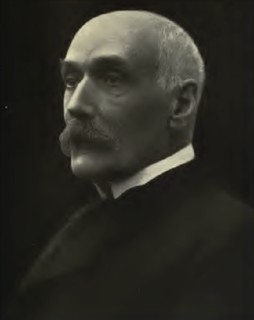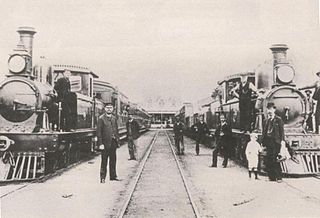


The Molteno Regulations (1874) were a system of government grants to establish free, open-to-all, public libraries, in the Cape Colony, South Africa.



The Molteno Regulations (1874) were a system of government grants to establish free, open-to-all, public libraries, in the Cape Colony, South Africa.
Their promulgation in the nineteenth century (Government notice 442, 1874) was intended to stimulate the creation of public libraries, especially in smaller towns and villages, which would be open to all without regard to race or class.
The government would provide an annual grant of up to £100 (later increased), on condition that the library would make all books accessible to all members of the public, without exception, free of charge. It was in effect a "pound-for-pound" system, whereby the library's annual grant would depend on how many subscriptions, visits and donations it could show that it had received. [1] [2]
The regulations led to a massive expansion in the number and size of public libraries (both reading rooms and subscription libraries) across the Cape Colony, giving it one of the greatest concentration of libraries in the world by the end of the century.
Due to their simplicity and success, the regulations were adopted by other parts of southern Africa, especially after union in 1910. They remained in force until they were rescinded in 1955, and were later named after the Cape Prime Minister who first issued them in 1874, John Molteno. In drawing up the regulations he had been influenced by one of his childhood jobs - packing books at the old Cape Town library. [3] [4] [5]
Responsible government is a conception of a system of government that embodies the principle of parliamentary accountability, the foundation of the Westminster system of parliamentary democracy. Governments in Westminster democracies are responsible to parliament rather than to the monarch, or, in a colonial context, to the imperial government, and in a republican context, to the president, either in full or in part. If the parliament is bicameral, then the government is responsible first to the parliament's lower house, which is more representative than the upper house, as it usually has more members and they are always directly elected.

The Union of South Africa is the historical predecessor to the present-day Republic of South Africa. It came into being on 31 May 1910 with the unification of the Cape Colony, the Natal Colony, the Transvaal, and the Orange River Colony. It included the territories that were formerly a part of the South African Republic and the Orange Free State.
The year 1870 in the history of the Cape Colony marks the dawn of a new era in South Africa, and it can be said that the development of modern South Africa began on that date. Despite political complications that arose from time to time, progress in Cape Colony continued at a steady pace until the outbreak of the Anglo-Boer Wars in 1899. The discovery of diamonds in the Orange River in 1867 was immediately followed by similar finds in the Vaal River. This led to the rapid occupation and development of huge tracts of the country, which had hitherto been sparsely inhabited. Dutoitspan and Bultfontein diamond mines were discovered in 1870, and in 1871 the even richer mines of Kimberley and De Beers were discovered. These four great deposits of mineral wealth were incredibly productive, and constituted the greatest industrial asset that the Colony possessed.

Griqualand West is an area of central South Africa with an area of 40,000 km2 that now forms part of the Northern Cape Province. It was inhabited by the Griqua people – a semi-nomadic, Afrikaans-speaking nation of mixed-race origin, who established several states outside the expanding frontier of the Cape Colony. It was also inhabited by the pre-existing Tswana and Khoisan peoples.

John Xavier Merriman was the last prime minister of the Cape Colony before the formation of the Union of South Africa in 1910.
The following lists events that happened during 1874 in South Africa.
The Cape Mounted Riflemen were South African military units.
The Cape Colonial Forces (CCF) were the official defence organisation of the Cape Colony in South Africa. Established in 1855, they were taken over by the Union of South Africa in 1910, and disbanded when the Union Defence Forces were formed in 1912.

Sir John Charles Molteno was a soldier, businessman, champion of responsible government and the first Prime Minister of the Cape Colony.

Percy Alport Molteno was a Cape Colony-born lawyer, director of companies, politician and philanthropist who served as a Liberal Member of Parliament (MP) from 1906 to 1918.

Molteno is a town in the Eastern Cape province of South Africa.

The Cape Government Railways (CGR) was the government-owned railway operator in the Cape Colony from 1874 until the creation of the South African Railways (SAR) in 1910.

Saul Solomon was an influential liberal politician of the Cape Colony. A tireless defender of racial and religious equality, Saul Solomon was an important member of the movement for responsible government and an opponent of Lord Carnarvon's disastrous Confederation scheme.

John ("Jock") Paterson was a prominent politician and successful businessman of the Cape Colony, and had a great influence on the development of Port Elizabeth where he was based. He ran newspapers, established the Grey Institute and played a significant role in founding South Africa's Standard Bank. As a politician "there is no doubt that, as leader of the opposition triumvirate of himself, Sprigg and Southey, he would have been elected Prime Minister when the Molteno Ministry fell"

John Charles Molteno Jr. M.L.A., was a South African exporter and Member of Parliament.

The Griqualand West Annexation Act, was the act, passed in the Cape Colony Parliament on 27 July 1877, authorising the union of the Cape Colony with Griqualand West.

The Parliament of the Cape of Good Hope functioned as the legislature of the Cape Colony, from its founding in 1853, until the creation of the Union of South Africa in 1910, when it was dissolved and the Parliament of South Africa was established. It consisted of the House of Assembly and the legislative council.

The Palgrave Commission (1876–1885) was a series of diplomatic missions undertaken by Special Commissioner William Coates Palgrave (1833–1897) to the territory of South West Africa. Palgrave was commissioned by the Cape Government to meet with the leaders of the nations of Hereroland and Namaland, hear their wishes regarding political sovereignty, and relay the assembled information to the Cape Colony Government.

Central Library Cape Town is a public library in Cape Town, South Africa. It is one of 104 libraries within the City of Cape Town Library and Information Services.
The history of libraries in South Africa had its start with libraries formed for private use which later were made available for the general public. In 1761, the most extensive of these early private collections, owned by Joachim von Dessin, the secretary of the Orphan Chamber, was left to the Cape consistory of the Dutch Reformed Church specifically to form the basis of a public library for the advantage of the community.